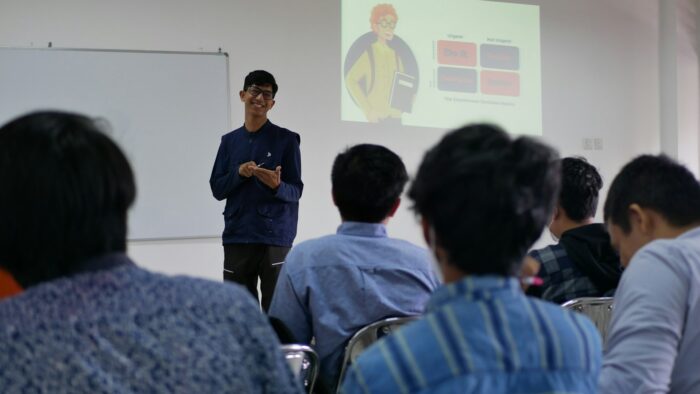NPR Education discusses Nobel Laureate Carl Wieman’s recommendation that universities and colleges need to revise the ways they teach students. Relying on lectures is simply not reliable, nor is it a pathway for student understanding and success. Wieman states that administrators in universities are focused mainly on publications and research produced by faculty. This means the quality of their teaching is secondary in many post-secondary institutions. However, Wieman sees that there is a better, more productive way to teach students. As a professor in Stanford’s Physics Department and its Faculty of Education, Wieman practices “active learning.”

Photo by Herlambang Tinasih Gusti on Unsplash.
The benefits of active learning
“Active learning” is a method by which Wieman lectures for only part of his class in order to spark student interest. After that, students split up into groups to complete small projects, talk about the course material, and work problems out amongst themselves. Such a method of teaching has been proven to be very effective. Many journals and science publications state that students engaged in active learning score much higher on tests as opposed to students learning mainly in the traditional lecture format.
Interestingly, Wieman considers himself a cognitive coach as opposed to a traditional lecturer. Cognitive coaching implies giving students the ability to become masters of their own learning. Therefore, given the success of active learning, what’s stopping many colleges and universities from adopting such a method?
The costs to implementing a new teaching method
Dan Schwartz, Dean of Stanford’s Faculty of Education, states that teachers are reluctant to implement teaching methods that seem challenging. The trick is to create innovative teaching methods that professors are able to easily implement in their classes. This, Schwartz says, is also the problem with many K-12 schools. If traditional methods of teaching are more easily implemented, it is likely that they will be followed instead of more progressive (and possibly more effective) teaching methods.
This reality is underscored by the relatively small number of schools that currently use active learning methods. However, educational leaders are starting to understand the benefits of these methods and are working towards implementing them. At Stanford, the physics and math departments have implemented active learning in introductory math and physics courses. Some departments in the University of British Columbia have also begun teaching through active learning methods.
It appears that until university administrators can place more value on instruction, research grants and publications will trump good teaching.
Categorised in: Uncategorized
This post was written by Madeleine De Welles
